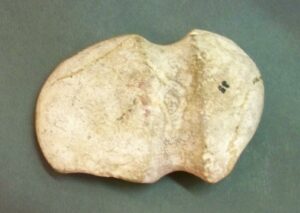
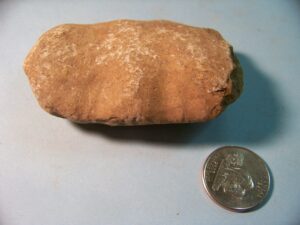 One of the earliest known recoveries of a ground stone axe was from the Modoc Rock Shelter in southern Illinois. A full-groove axe was recovered from the 19-foot level that measured six inches in length and dated to about 7,000 years old. The full groove axe is the earliest axe form. Later the three-quarter-groove axe was developed, followed still later by the half-grooved form. There is no firm date for the development of the three-quarter-grooved axe form beyond the fact that it seems to have followed the full-grooved form. The three-quarter –grooved form is the most numerous of all axe forms, followed by the full-grooved form, and finally the half-grooved axe. The half-grooved axe form is rare in comparison to the other forms and clearly demonstrates a move away from grooved axe forms altogether (Hothem 1989:8-10).
One of the earliest known recoveries of a ground stone axe was from the Modoc Rock Shelter in southern Illinois. A full-groove axe was recovered from the 19-foot level that measured six inches in length and dated to about 7,000 years old. The full groove axe is the earliest axe form. Later the three-quarter-groove axe was developed, followed still later by the half-grooved form. There is no firm date for the development of the three-quarter-grooved axe form beyond the fact that it seems to have followed the full-grooved form. The three-quarter –grooved form is the most numerous of all axe forms, followed by the full-grooved form, and finally the half-grooved axe. The half-grooved axe form is rare in comparison to the other forms and clearly demonstrates a move away from grooved axe forms altogether (Hothem 1989:8-10).
The flaked axe form was a favorite among Swift Creek sites in Georgia. The appearance of ground stone axes on many Woodland sites in Georgia may be an indication of an earlier Archaic occupation on the site, the recovery of an older axe by a more recent culture, or, in some cases, a copy being made of an earlier axe form by a more recent culture.
The monolithic or one-piece axe was developed during the Mississippian period as a ceremonial implement. The axe form is made completely from one piece of stone and is finely finished. They are rare and are usually associated with large ceremonial centers and mound complexes. These axes are small, measuring between 10 and 16 inches in length.
The grooved axe is a wood working tool, although some very large examples of oversized axes would make them impractical for tool use and were probably ceremonial in nature. Damage to the bit is common and there is evidence that once broken, both the bit and poll ends of the axe were repaired, sometimes including a new groove for continued use. Hafting methods could include a wooden handle of green wood split or fashioned to fit the grooves and lashed tightly with green rawhide and seasoned. Smoothed stone axes are often made of greenstone or granite using a pecking method to develop the basic shape followed by abrading to provide a finished product.
Illustrations could not be printed in their actual size. Notes have been added to define axe characteristics. Type names are consistent with those assigned by Lar Hothem (Hothem 1989:8-10)
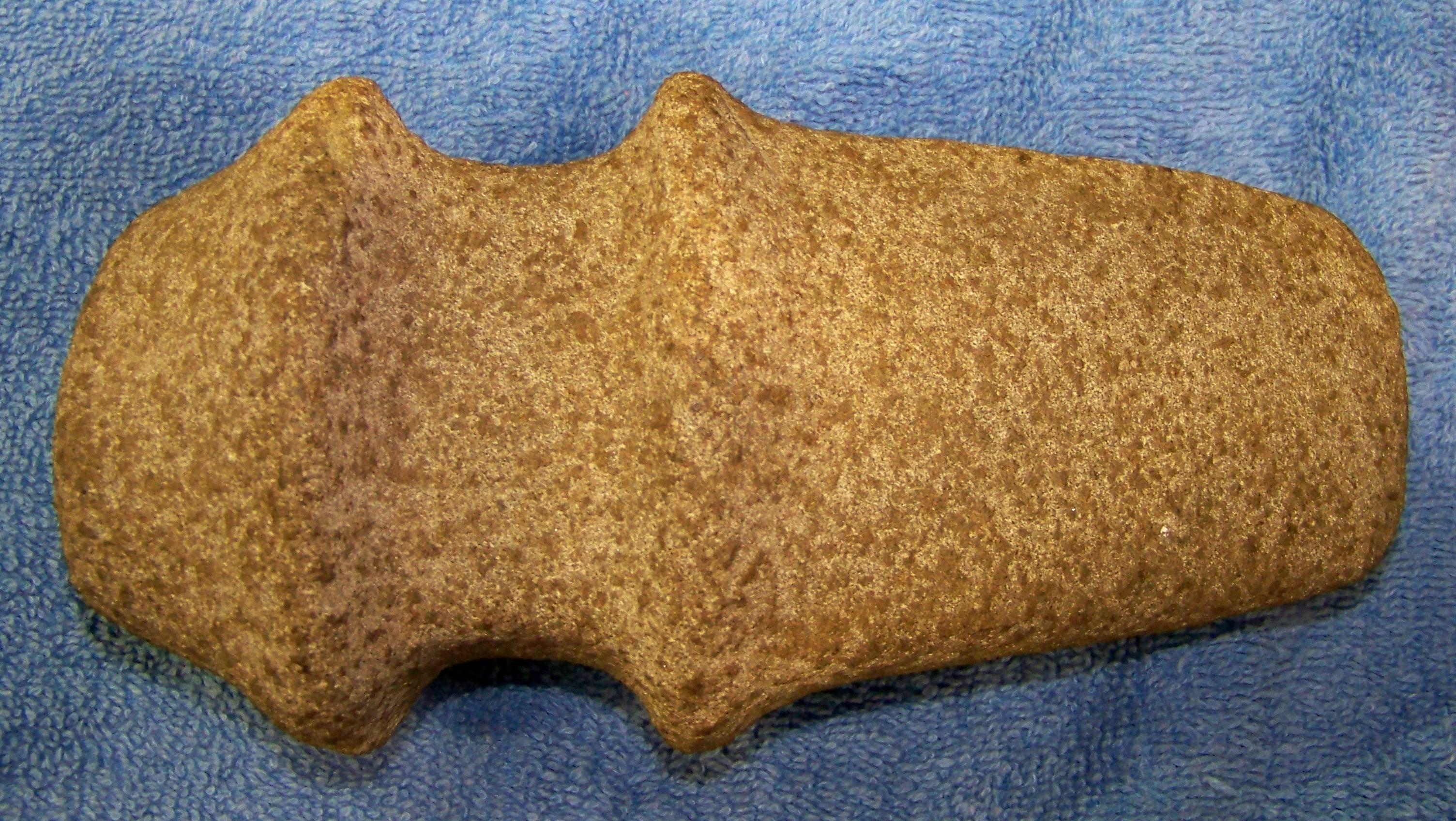
Antonio Waring also referred to this type as a Deptford axe (Waring 1977:151) having recovered one from the surface of a site containing Deptford ceramics. This type often has a deep, square groove that may equal the blade in width. Ridges are well-defined ridges and a dished out or dimpled poll. Many researchers believe that, because of the fine craftsmanship, with deep notches and high ridges and the lack of damage to the bit and bowl, these axes were used for ceremonial purposes. Examples may be 6 to 11 inches in length. (Northern Georgia private collections). The top two examples are from private collections. The bottom example is from the Old Capital Museum artifact ID day and is now in the collection of Wayne Porch.
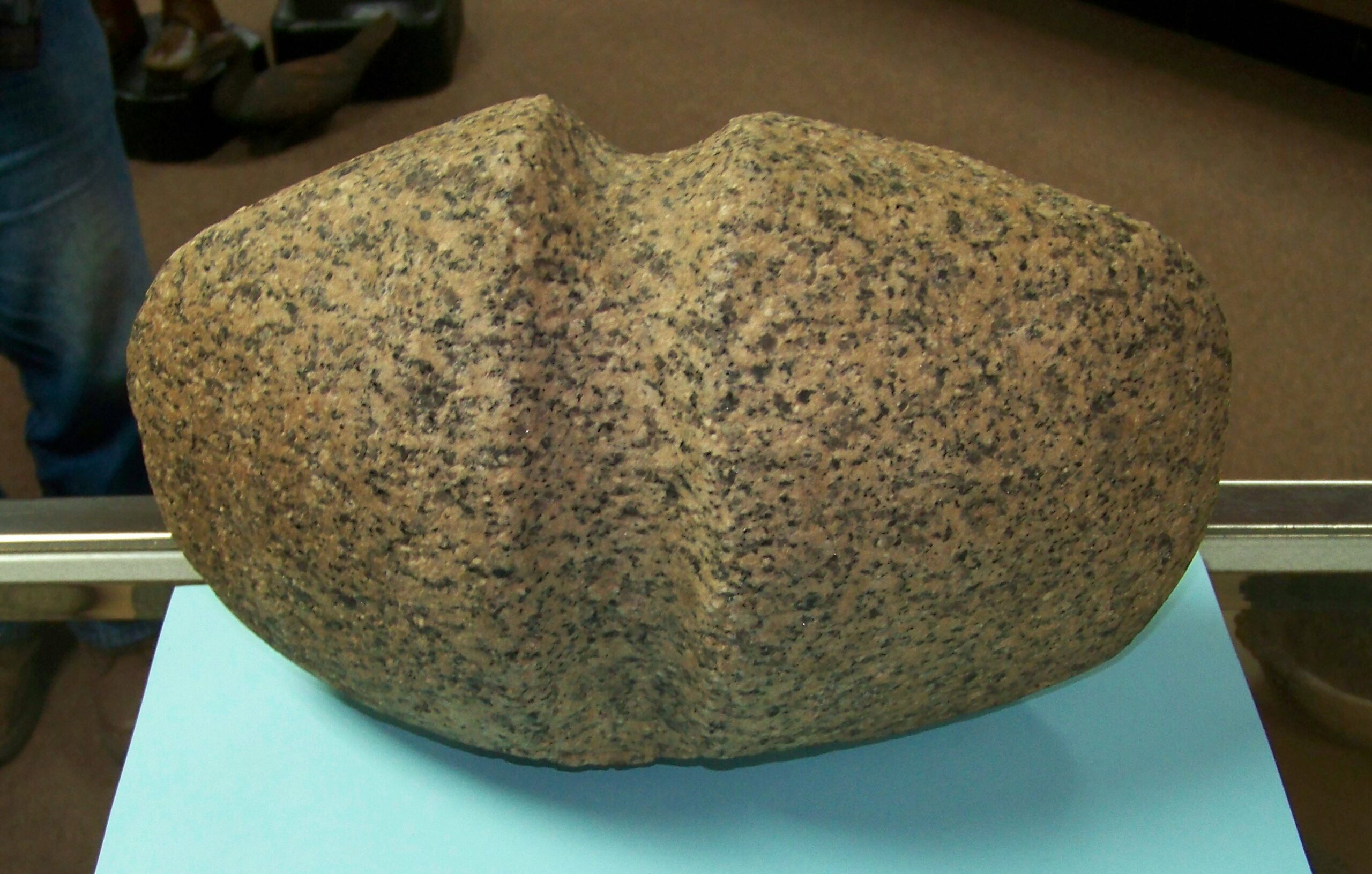
Double-Bit axes are very rare. Both full and three-quarter grooved axe forms can have double bits. This example is also an oversized axe measuring almost 7 inches high and over 12 inches in length. This may have had a ceremonial use given its lack of damage. (Courtesy of Mike Stokes, Museum of Southeastern Indians)
Flaked axes were heavily used by the Swift Creek culture. Woodland cultures frequently did not peck and grind their axe heads. While this Double Bit axe has a very clear groove, not all flaked axes had a clear hafting groove. The axe to the right is very small at 3 inches and may have been a hand axe or meant for a child’s toy. (Northern Georgia private collection)
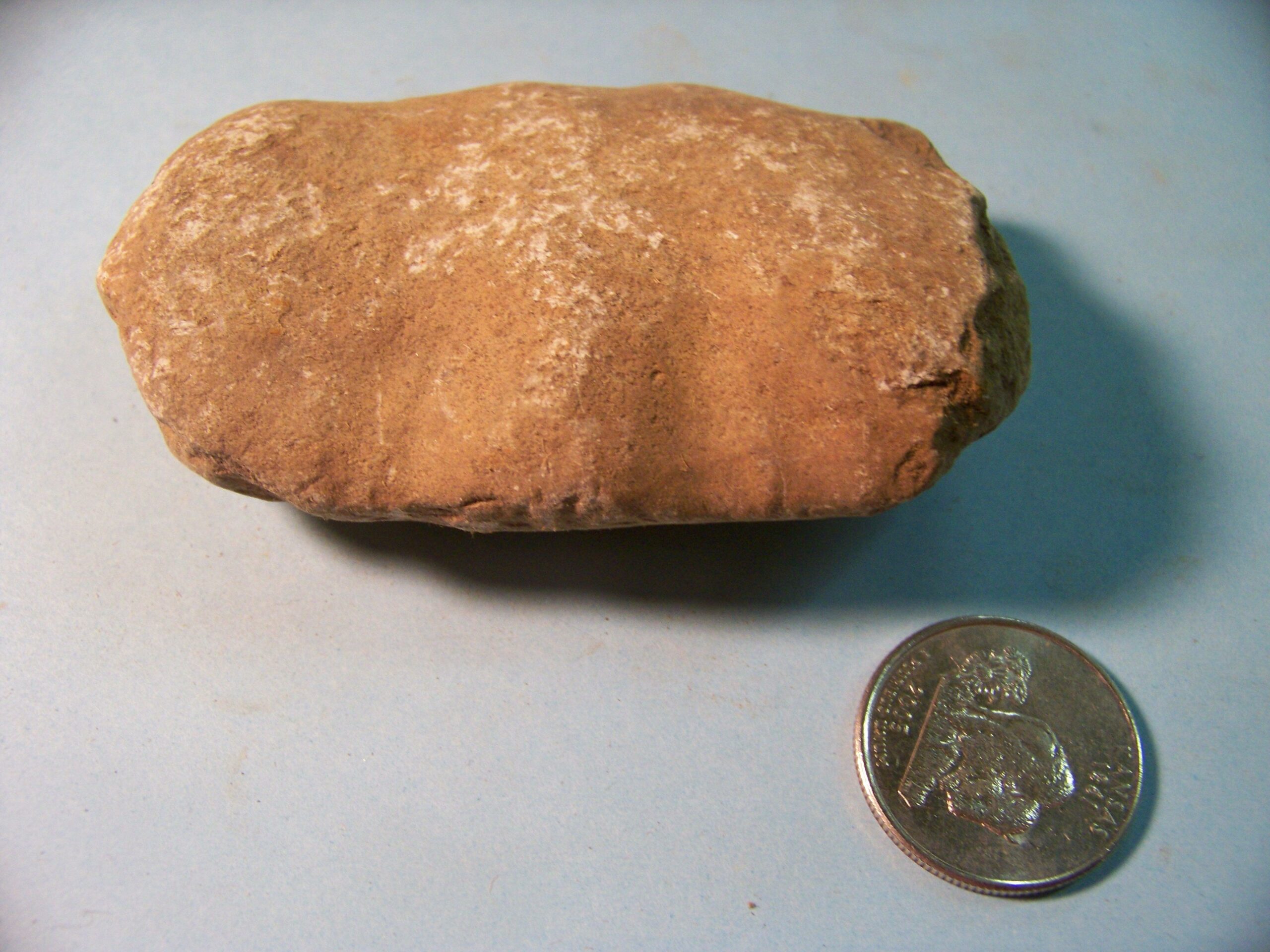
This is an unusual axe form with two groves and a ridge between them. This example has shallow grooves and shows heavy use, but is a pecked and ground axe. One groove may be deeper as the primary groove. This type may occur anywhere in the U.S., but are not found in any concentration. (University of Georgia collections) C.B. Moore recovered one example of this type of axe from the Shield’s Mound in Jacksonville, Florida. The mound contained Swift Creek (Early) pottery and dated to the Middle Woodland period.
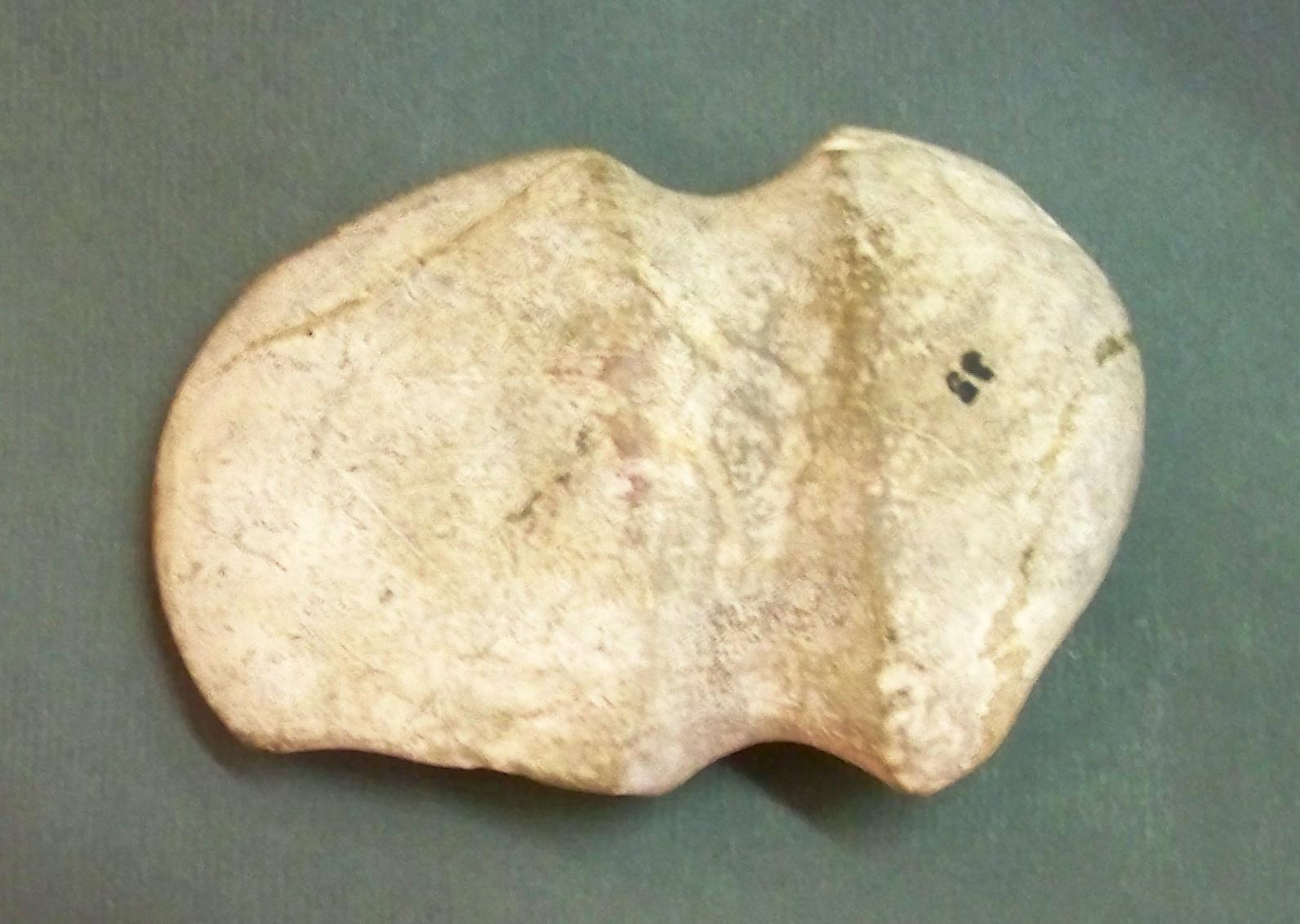
The Expanded Poll Axe has a poll that is the widest part of the axe. These axes range between 5 and 11 inches in length and have been recovered across the eastern United States. (Courtesy of the Laurens County History Museum)

The ridge lines of this type extend beyond the width of the blade and poll, but not as far as the barbed axe style. This feature may be applied to other axe forms like the Deptford axe of Georgia. (Courtesy of the Laurens County History Museum)
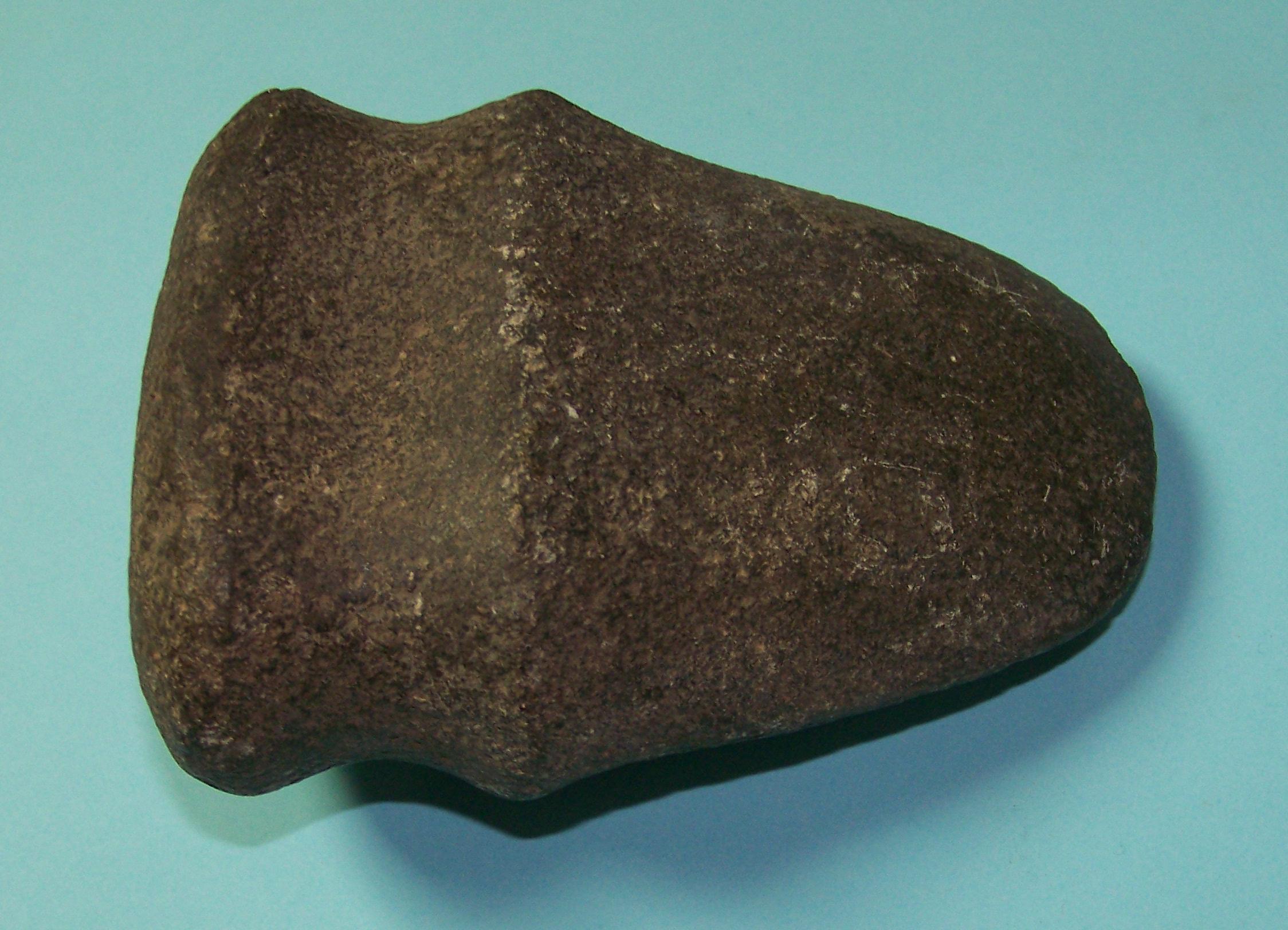
This axe has a flattened poll, often with an indentation that may have been used for pounding. The blade may take many forms. It ranges in length from 5 to 9 inches and is found throughout the eastern Midwest. (Courtesy of Mike Stokes, Museum of the Southeastern Indians)
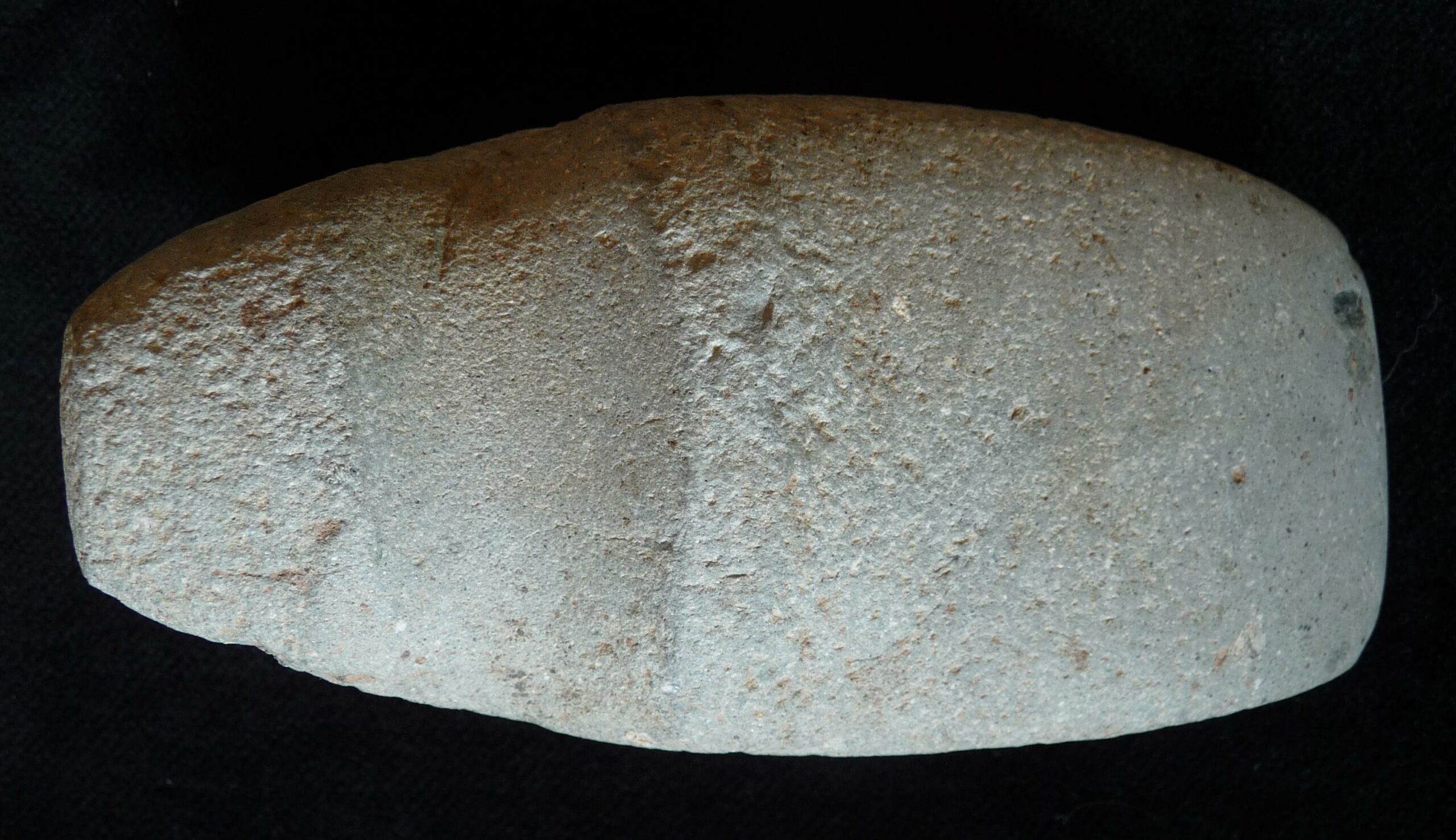
This rare axe form from Kentucky is from the Bob Reeves collection. The half groove form demonstrates the move from the full groove axe to the “grooveless” or celt form. This rare form seems to have appeared during the Woodland period and possesses the same excurvate blade outline as Adena celts.
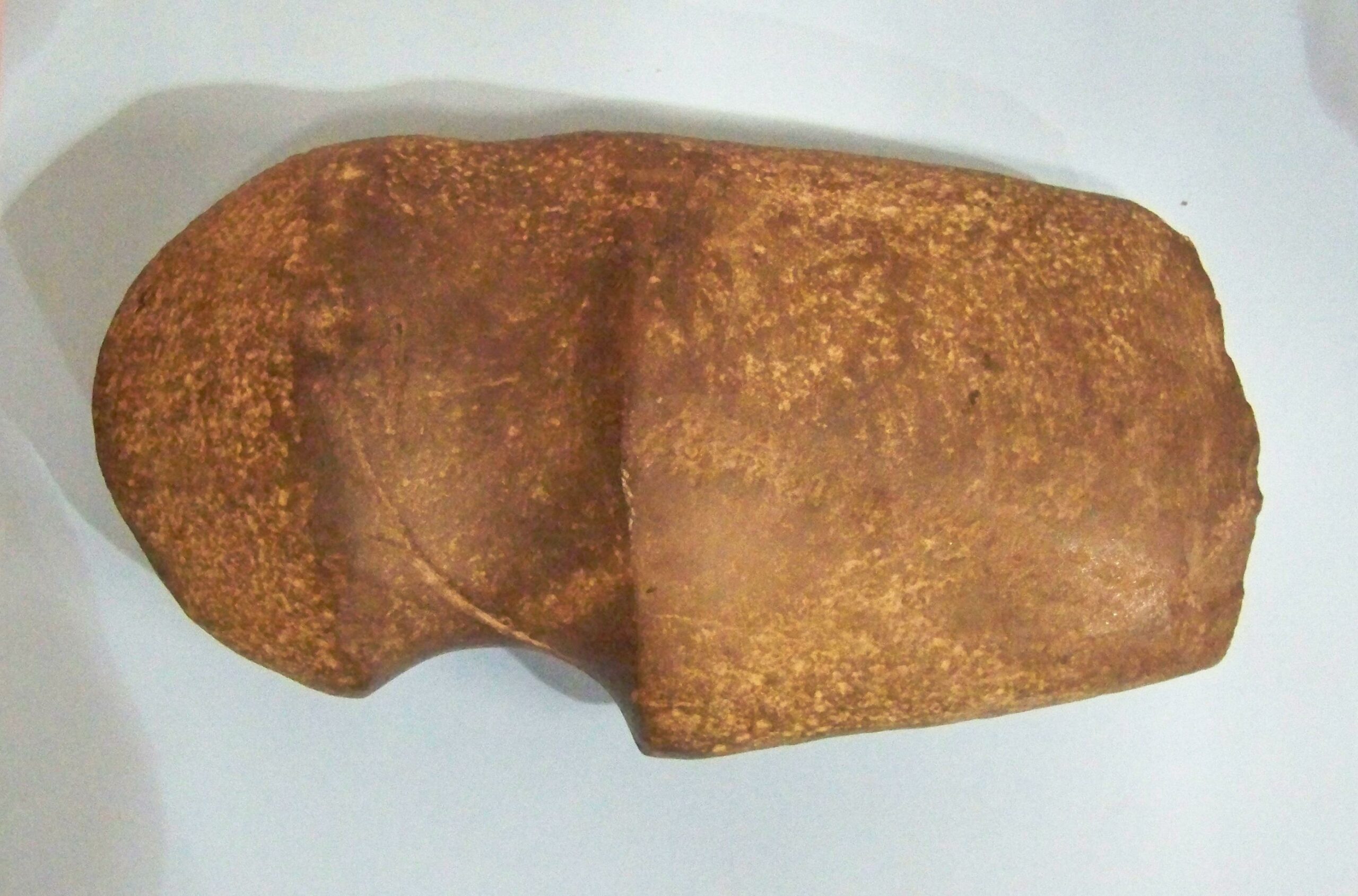
The Offset Axe has a blade that is offset from the center-line of the poll. This example measures nearly 8 inches in length. (Northern Georgia private collection).
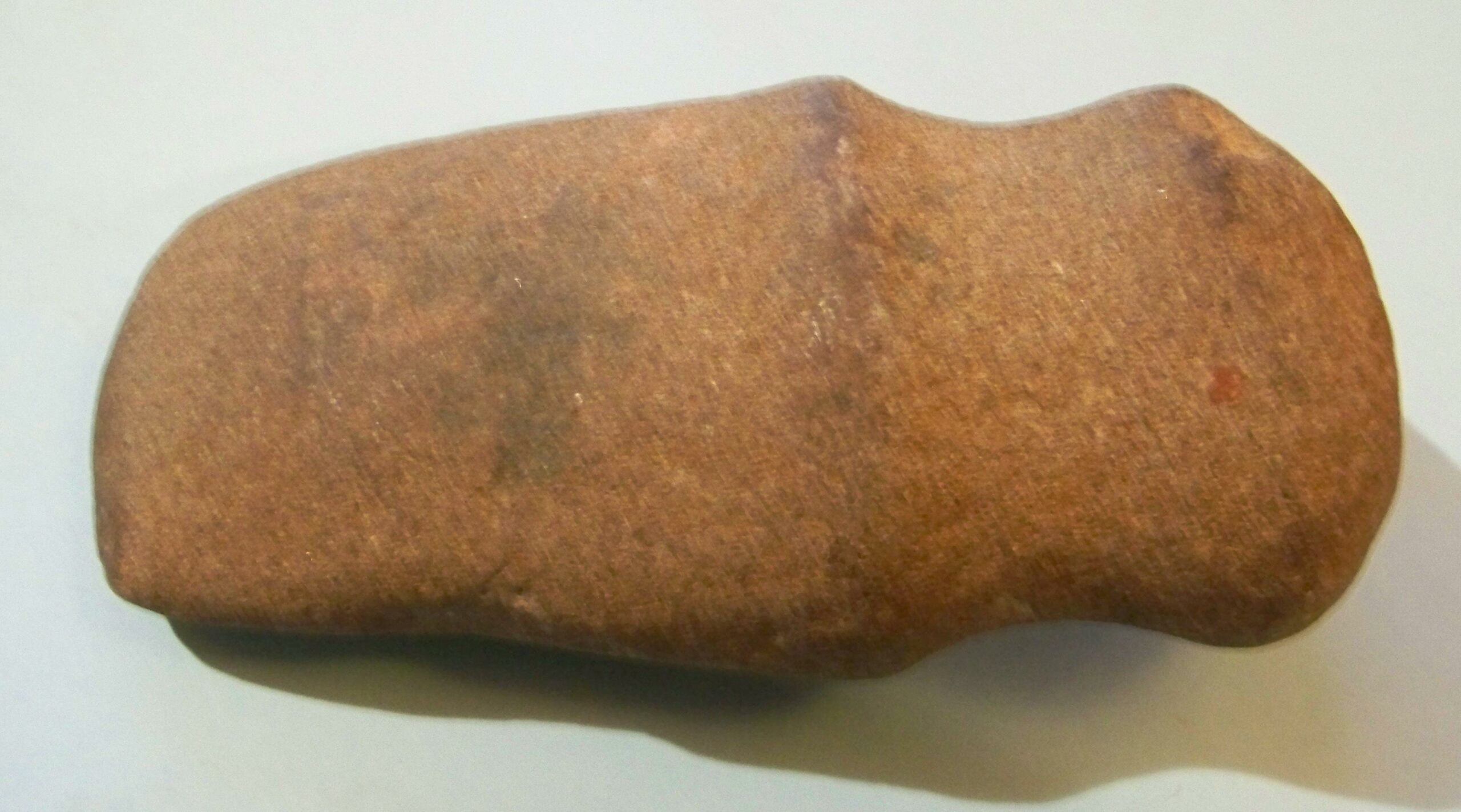
The Full Groove Poll Axe is the oldest form of axe dating to 7000 years BP with continued use at least through the Late Archaic period. The Plain 4X4 ax is distributed across the entire U.S. It ranges in size from 4 to 9 inches. Ax edges are rounded and is generally oblong in shape. (Northern Georgia private collection)
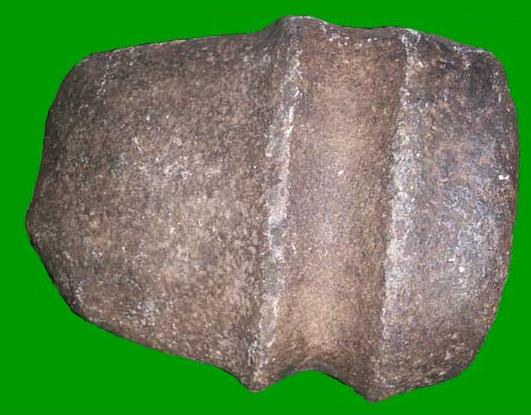
This ax normally has a long blade despite the groove being very near the poll end. This example has a broken and reworked blade. This type ranges from 5 to 12 inches in length when complete with a medium-ridged groove. Examples are often well-made with a high polish. Distribution for this type ranges throughout the eastern Midwestern states. (Courtesy of Mike Stokes, Museum of the Southeastern Indians)
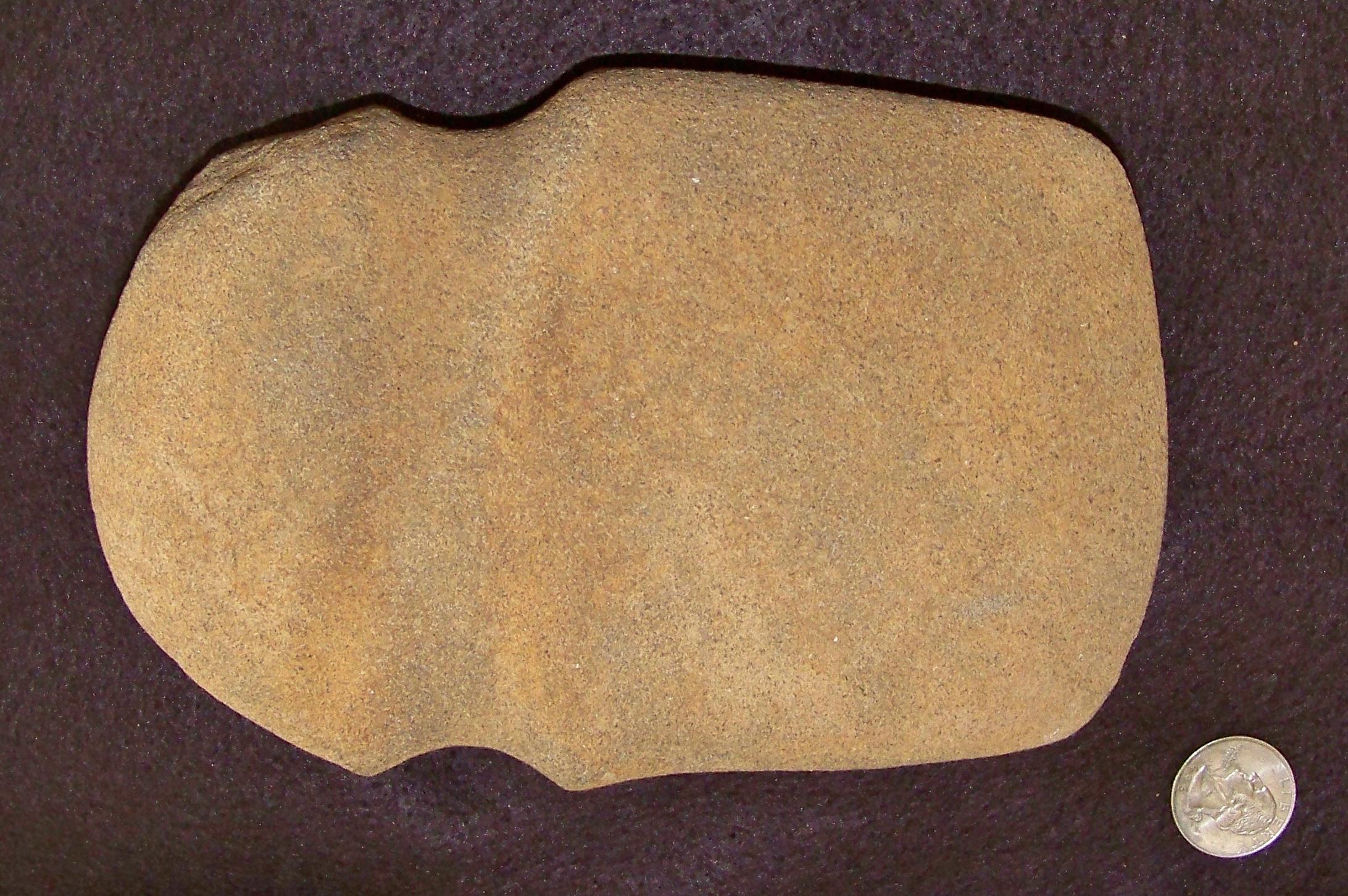
The Oversized Axe can be many times larger than a normal axe and weigh twenty pounds or more.The largest axe known to the author was nearly 3 feet long and weighed well in excess of 100 pounds.Some smoothed examples may have been for ceremonial use while others, especially very large flaked examples, were clearly for utilitarian use.(Northern Georgia private collection, 2/3 actual size)
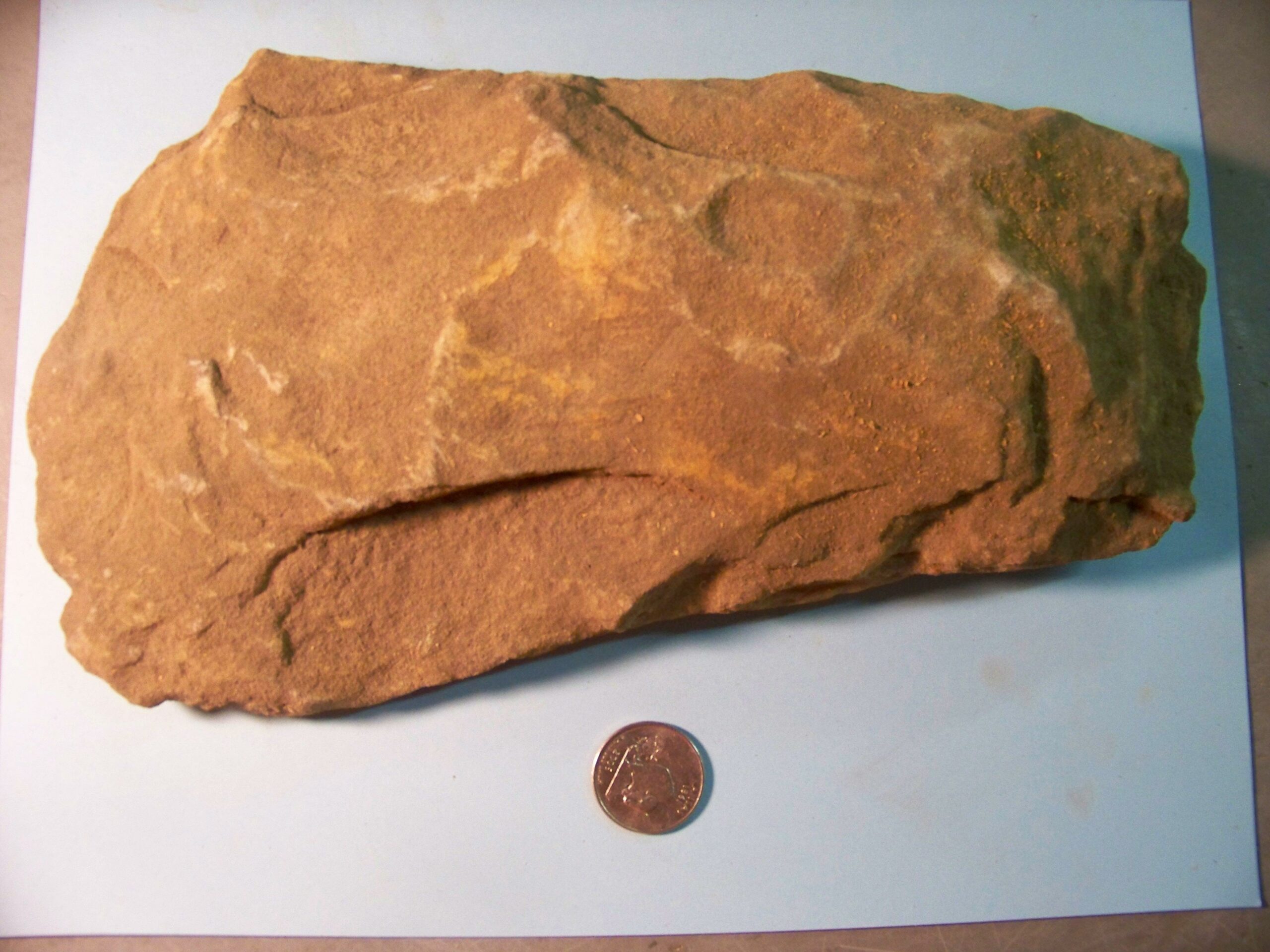
This example from north central Georgia is over 10 inches long and weighs in excess of 10 pounds. It was likely used for cutting wood. The metavolcanic rock from which it is made is very hard and would hold a sharp edge. (University of Georgia collections)
Regrooved axes are the result of repair when an axe breaks along its original groove. If the blade was long enough, a new groove could be made and use could continue. The blade or bit end of the axe will be short and the poll end will show breakage. This example is about 4.5 inches long. (Northern Georgia private collection)
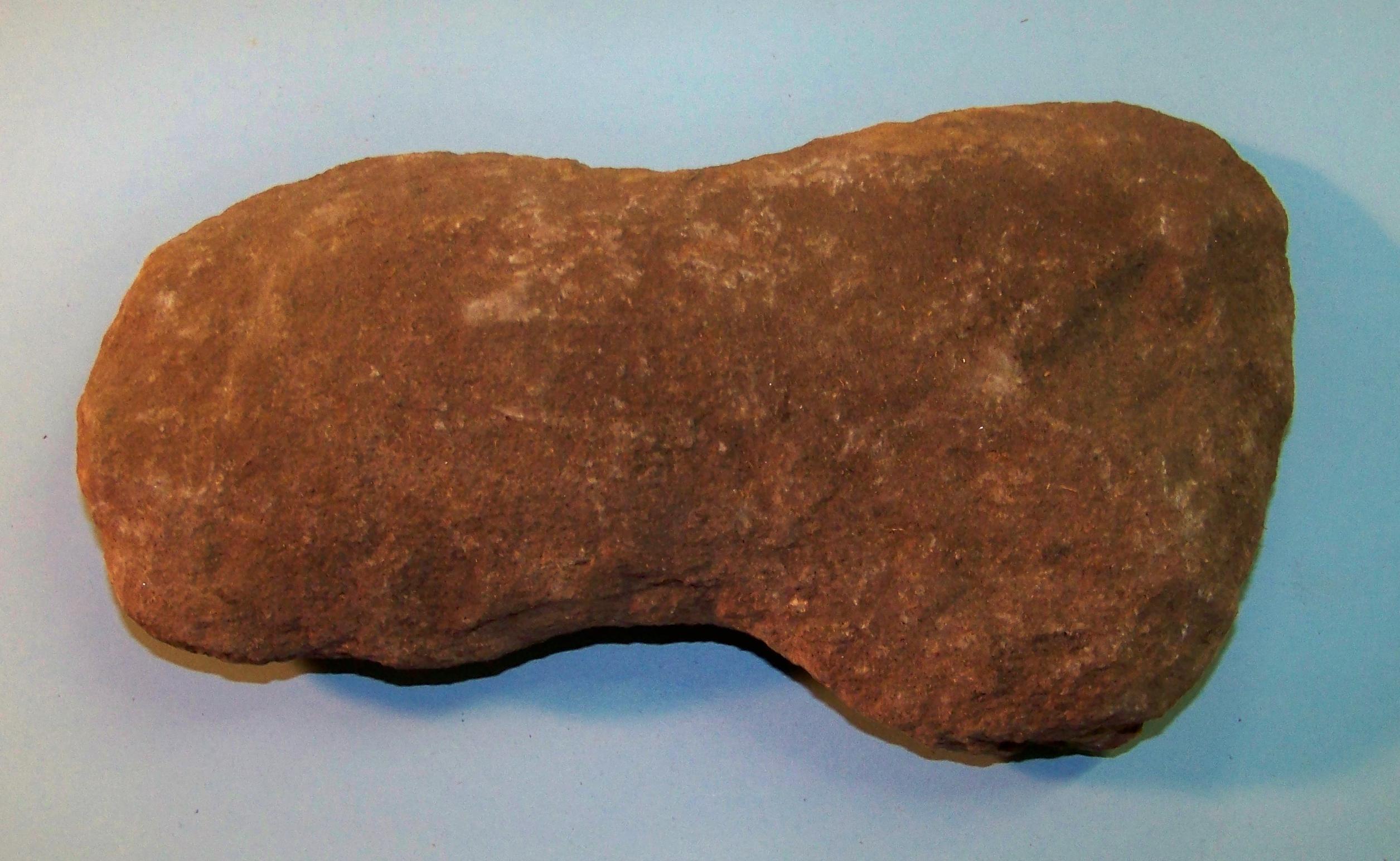
These are also called pebble or cobble axes. River stones were selected that already had an ax-like shape that could be altered with little effort, often having a slightly irregular shape and leaving the original patinated stone exterior in place. Found throughout the United States, these axes can range from 3 to 12 inches in length. (University of Georgia collections)
This form has a blade or bit that is angled toward the groove. This may be result of design or resharpening or both. These axes range in size from 4 to 9 inches throughout the U.S. (University of Georgia collections)
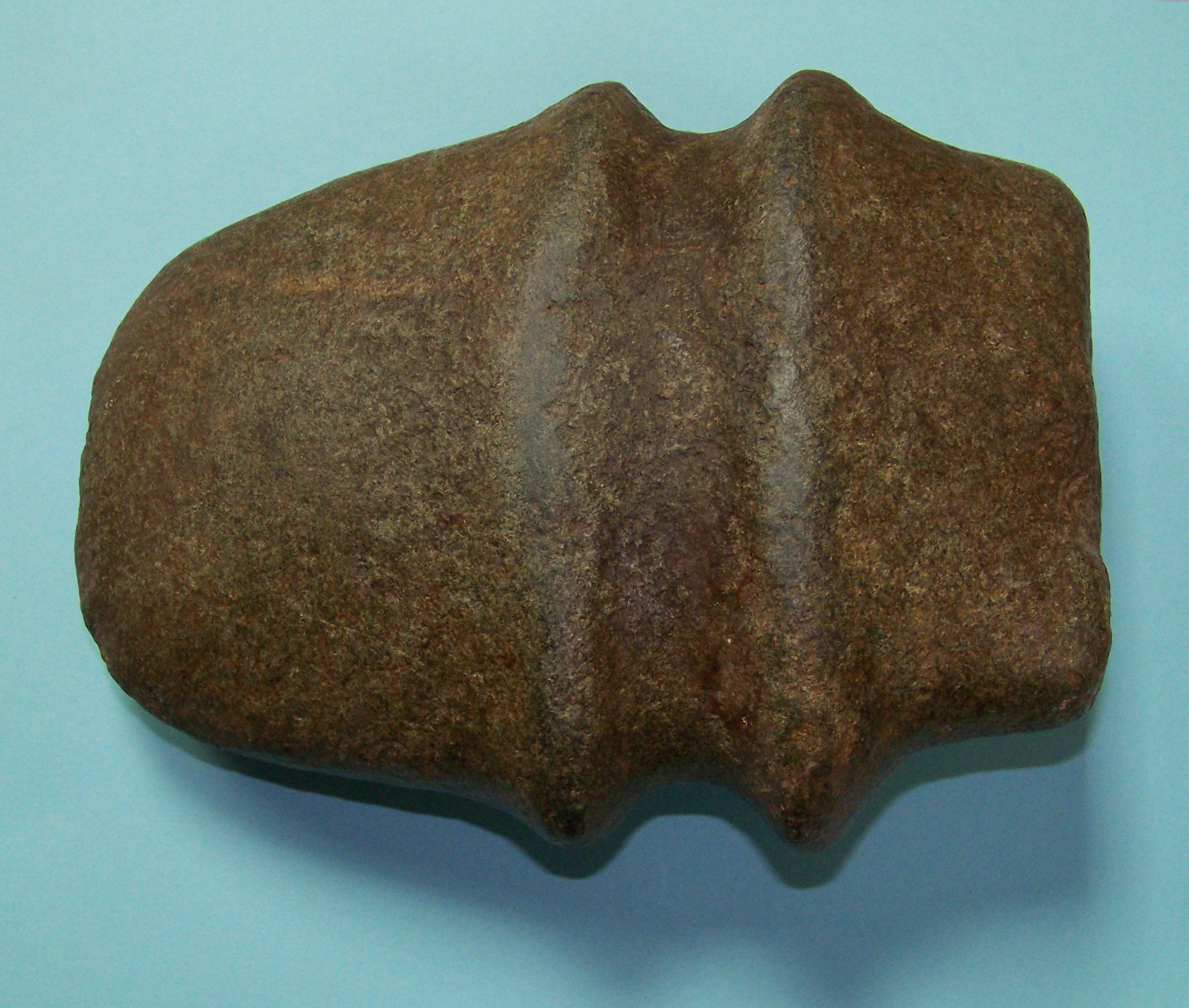
These axes have raised ridges along the groove that extend far beyond the sides of the blade and poll. They may often have been ceremonial and show little or no blade damage. Most barbed axes are from Michigan. The Southern Barbed axe is southeastern in origin. (Courtesy of Mike Stokes, Museum of the Southeastern Indians)
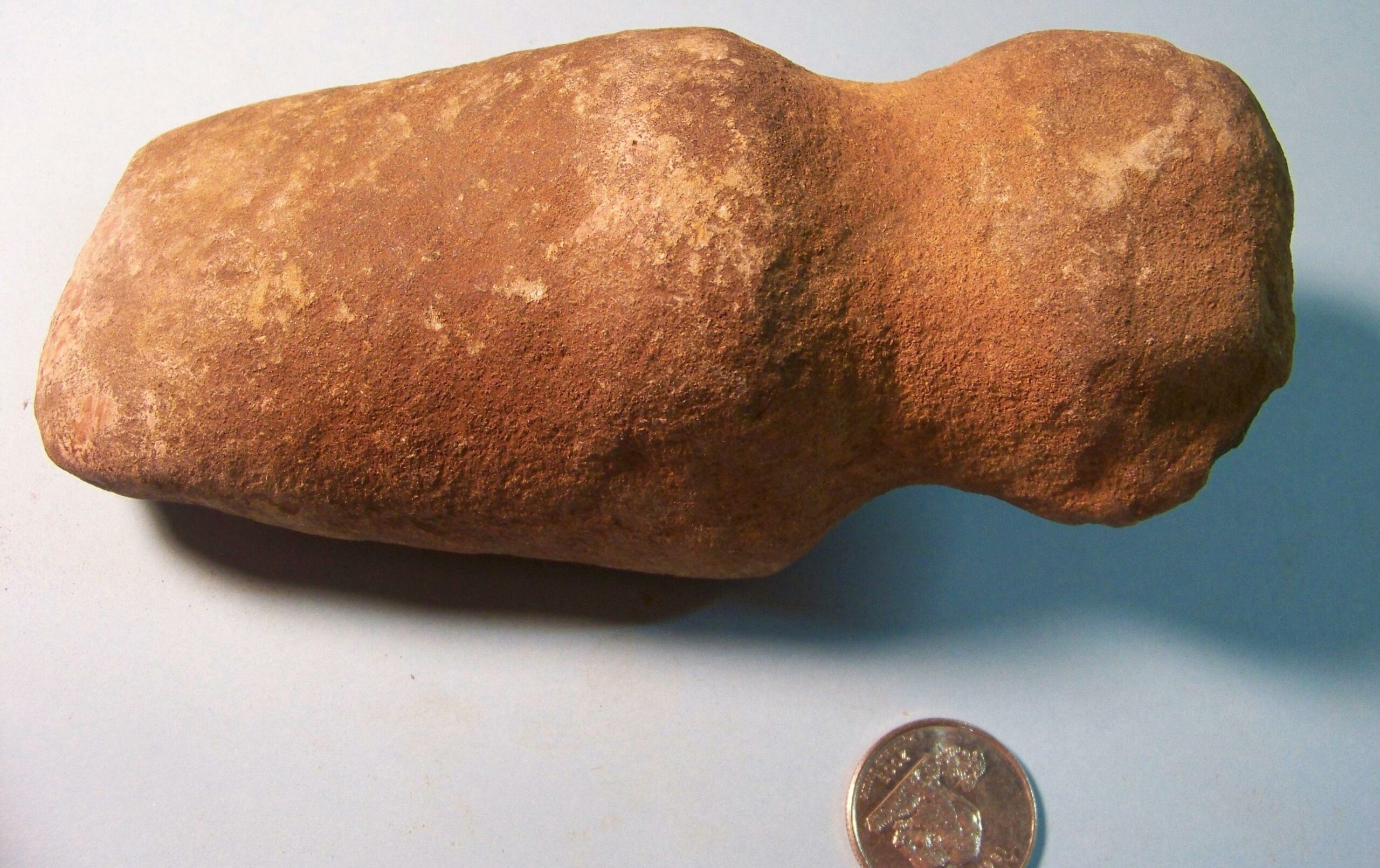
The Tapered Blade Axe is a full groove ax that narrows sharply to a noticeably narrow bit. The poll of this type does not expand from the shoulders of the blade, nor is the bit excessively long. The sides of the blade may be straight or slightly excurvate and the bit may be straight or excurvate. The overall length of the ax ranges between 6 and 13 inches. These axes may be found among the eastern and Midwestern states. (University of Georgia collections)
This type is also referred to as a “rabbit eared” axe. These are a southern style axe with a third notch in the poll end. This is not the result of damage, but purposeful notching. The type is almost always small at 3 to 4 inches and nearly square in form. (Courtesy of Mike Stokes, Museum of the Southeastern Indians)
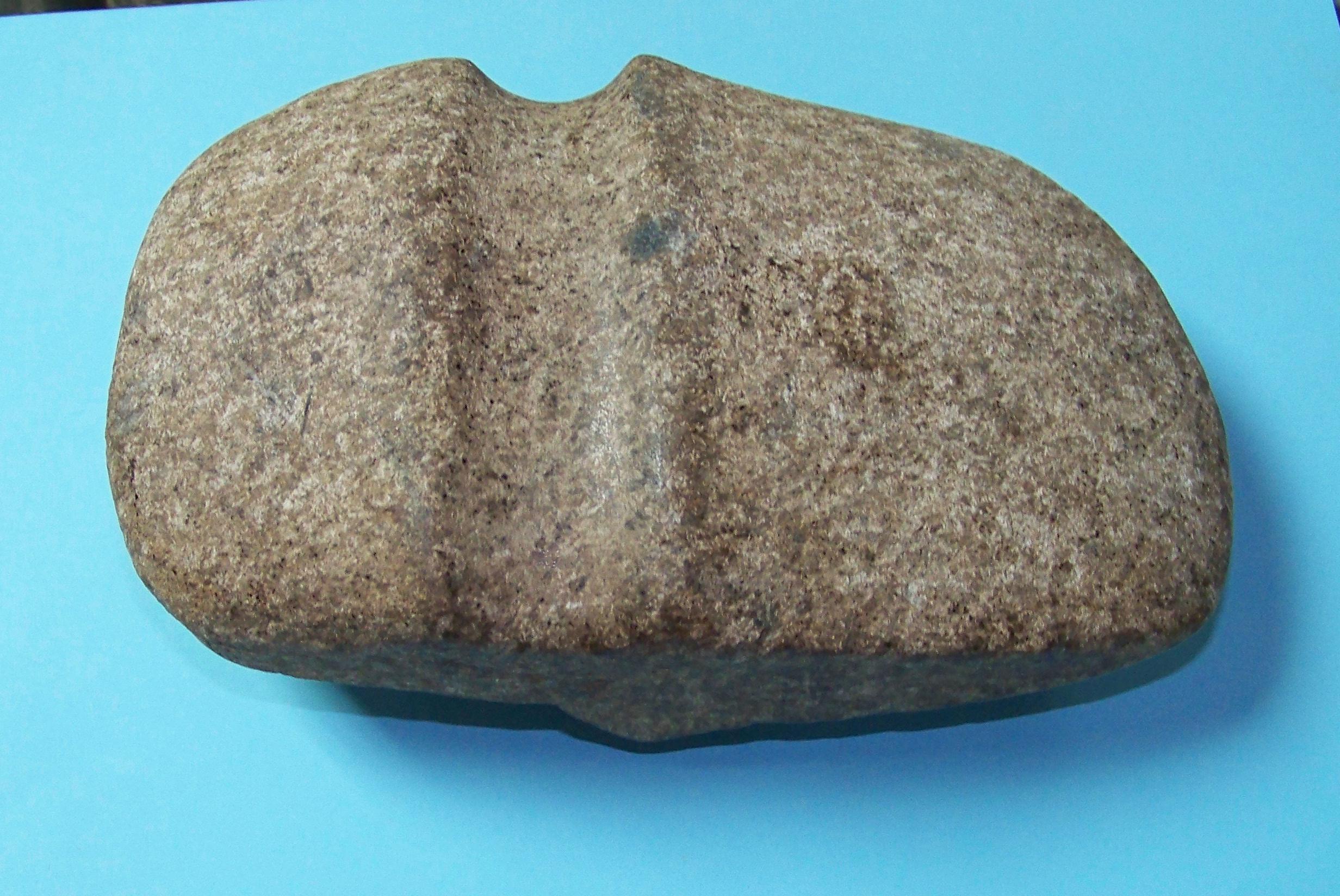
Three Quarter Groove axes were the most commonly used of all axe forms. There is no firm date for the beginning of their use. This example is about 6 inches long. (Courtesy of the Laurens County History Museum)
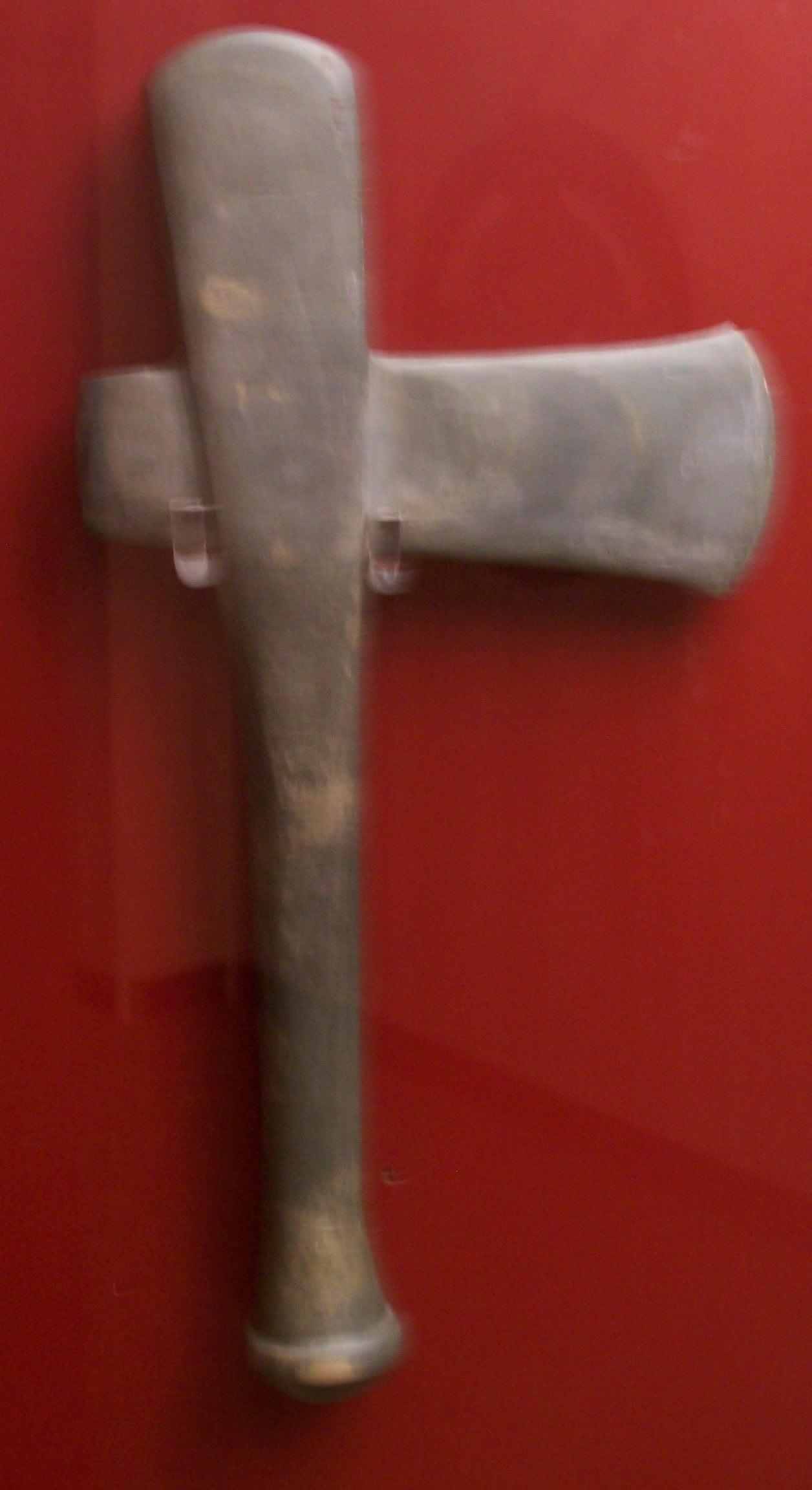
The example in figure one was recovered in 2001 near Chatsworth Georgia. Example 2 is from the Etowah Mound Complex. For a complete history of monolithic axes click here.
The monolithic axe is the rarest ceremonial celt form and was a symbol of rank and authority. The normal Mississippian utilitarian celt form was mounted in a wooden handle. The monolithic ax maintains the design of the utilitarian celt but is made from a single piece of stone. Antonio Waring, Jr. recorded a total of seventeen monolithic axes across the United States, six from Georgia. Only two axes were engraved, one from Tennessee and one (figure 4) from Cherokee County, Georgia. The example in figure 1 is only one of three complete examples and a fragment of a fourth example recovered at the Etowah Mound complex in Bartow County. One partial example (about 2/3) was recovered from the Hawkins site about nine miles from the Etowah Mounds. These axes date to the Middle Mississippian period and were part of the Southern Ceremonial Complex.
Reserch on this very rare celt form began with a paper written by Marshall H. Saville in 1895, some 40 years after the first recovery of this type. Saville’s paper, written for the Museum of the American Indian, Heye Foundation outlined the distribution of 17 recoveries of this axe form including a map of distribution and outline drawings of each example. Steven Loven also added to this research in 1924 with his study on the Tainan culture in the Lesser Antilles Islands.